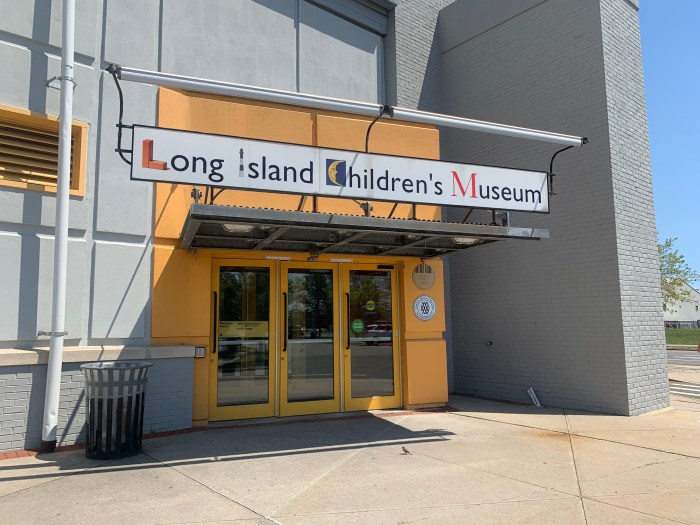Stewart Manor Fire Department to host open house
You hear the horn sound multiple times a day, around the clock, but did you ever wonder what happens during the critical moments after a distress call is made to the firehouse? Who are the volunteers who are stopped in their tracks at the sound of that horn and dash off to help a neighbor in need? You’d be surprised to learn that it could be the gentleman you see walking his dog after work in the evenings, the woman you see standing at the bus stop with her children every morning, or even the young man you used to see playing with his friends in front of your house.
The fire department “is made up of members who live here,” said Stewart Manor Fire Department Chief Tom Skinner. “These people are your neighbors, your family, your brothers, your sisters.”
On Sunday, April 27, from noon till 3 p.m., the Stewart Manor Fire Department will open its doors to the community to give residents a glimpse into what goes on in the firehouse and to meet the members. “We will have stations set up,” said SMFD member Fred Powell. Visitors will be able to climb inside an ambulance and fire truck as well as learn about training and benefits. “The members will be here to talk to our residents or anybody who wants to come in [about] how we operate” with regard to responding to fire and EMS calls, Powell said.
SMFD’s open house is part of RecruitNY, a statewide initiative to educate communities and bolster the ranks of volunteer first responders. As with neighboring fire departments, Stewart Manor has experienced a decline in membership over the past several years. “The membership ebbs and flows,” said SMFD member Peter Williams. “The ebb and flow that we have is effectively no different from the ebb and flow of the other volunteer fire departments in Nassau County.” Williams, along with Skinner and Powell, attributes declining membership to economic, cultural and societal issues.
“The biggest problem we have is the younger residents moving out because they can’t afford to live here,” Skinner said. “We’ve lost people in our membership over the last five or six years because people are moving away—they can’t afford to stay in Stewart Manor. That’s where we’ve been hit the most.”
Powell weighed in on the impact of cultural and societal changes. “Times have changed,” he said. “A lot of times our members can’t respond because they have young kids at home that they’re watching because the mother is working. It’s a totally different world today. Years ago, one person in the family worked and the other stayed home and watched the kids.”
Agreeably, people in society today seem busier than ever, which deters them from volunteerism. “Most people will say, “I don’t have the time, but the truth is you make the time,” Powell said. “I understand. I don’t have the time either, but I make the time,” he added.
“What if we didn’t do it?” Skinner suggested. “What if everyone didn’t make the time?”
Good, but scary question. “There’s no distinction between a volunteer and a paid fire … it’s the same thing!” Williams said. “Or a volunteer or paid heart attack—it’s the same thing. It’s just a matter of who’s coming.”
Volunteerism knows no boundaries, especially with regard to first responders. White collar, blue collar, old, young, male, female … “I think there’s a combination of factors that motivates people to join and that’s as multifaceted as the individual,” Williams said.
One constant, however, is what volunteers gain from what they give. “It really comes from your heart and the will to want to do good for strangers or your community,” Skinner said. With that comes a strong feeling of self-gratification, he added. “It definitely completes my life without a doubt. I hope my kids do it, and their kids do it. I just hope it goes down the line in the family.”
“The benefit is to see somebody who is in extremis or distress, to have that extreme bad condition alleviated for a moment until” we can get them to a hospital, Williams said. “Some people think that’s a great thing. Are you getting paid for that? No. Can you put a value on it? Well, maybe, yes. But that value is individual.”
What people can put a price on is free college tuition in exchange for active participation in a volunteer fire department. County Executive Ed Mangano has developed with the Nassau County Office of Emergency Management a Volunteer Scholarship Program as an incentive for people to serve in the volunteer emergency services throughout Nassau. Under the federally funded program, volunteers who are active and in good standing in one of Nassau County’s volunteer fire companies or fire department EMS providers will be eligible to have their tuition to Nassau Community College paid. Scholarship recipients may pursue any field of study, full-time or part-time, and must maintain certain academic objectives during their course of study.
Volunteers also receive critical EMS and firematic training at no cost to them—life skills that are priceless.































